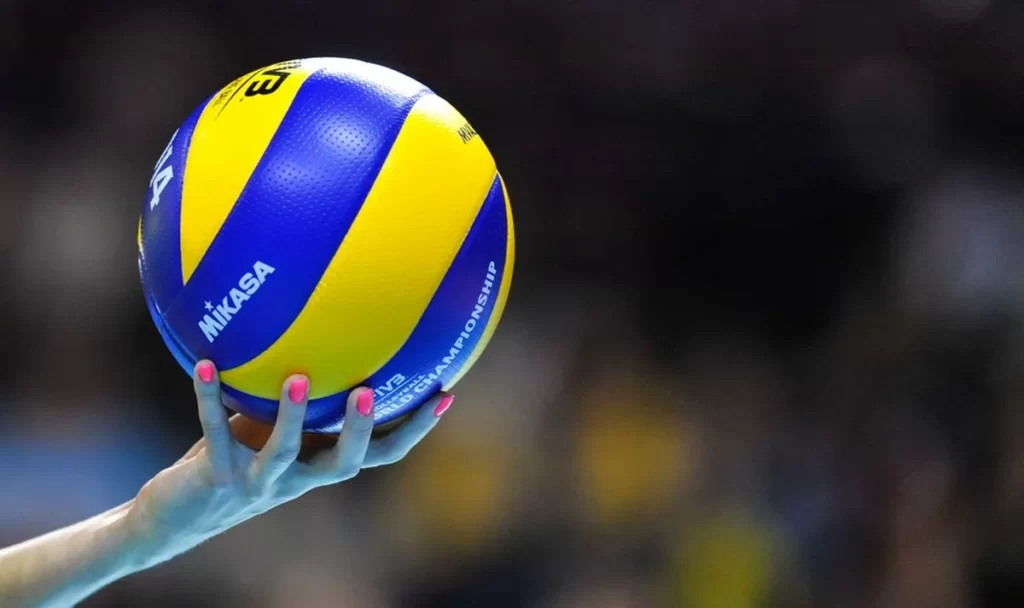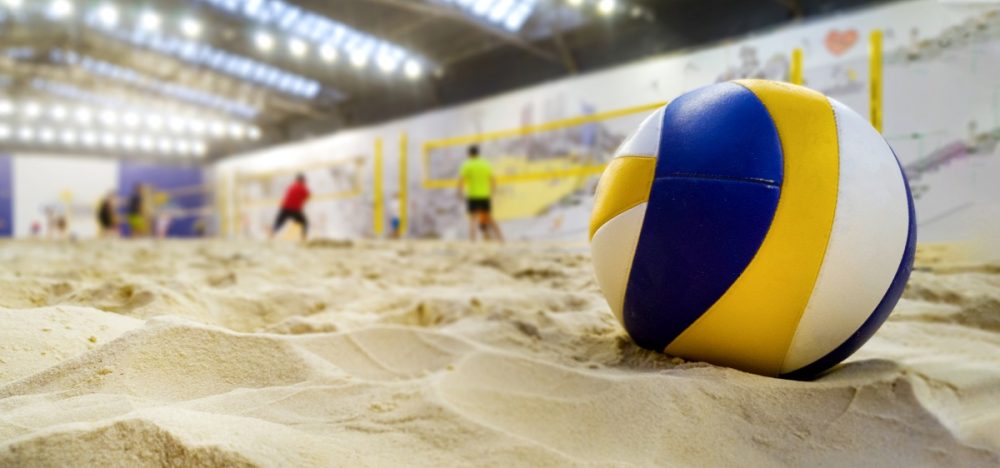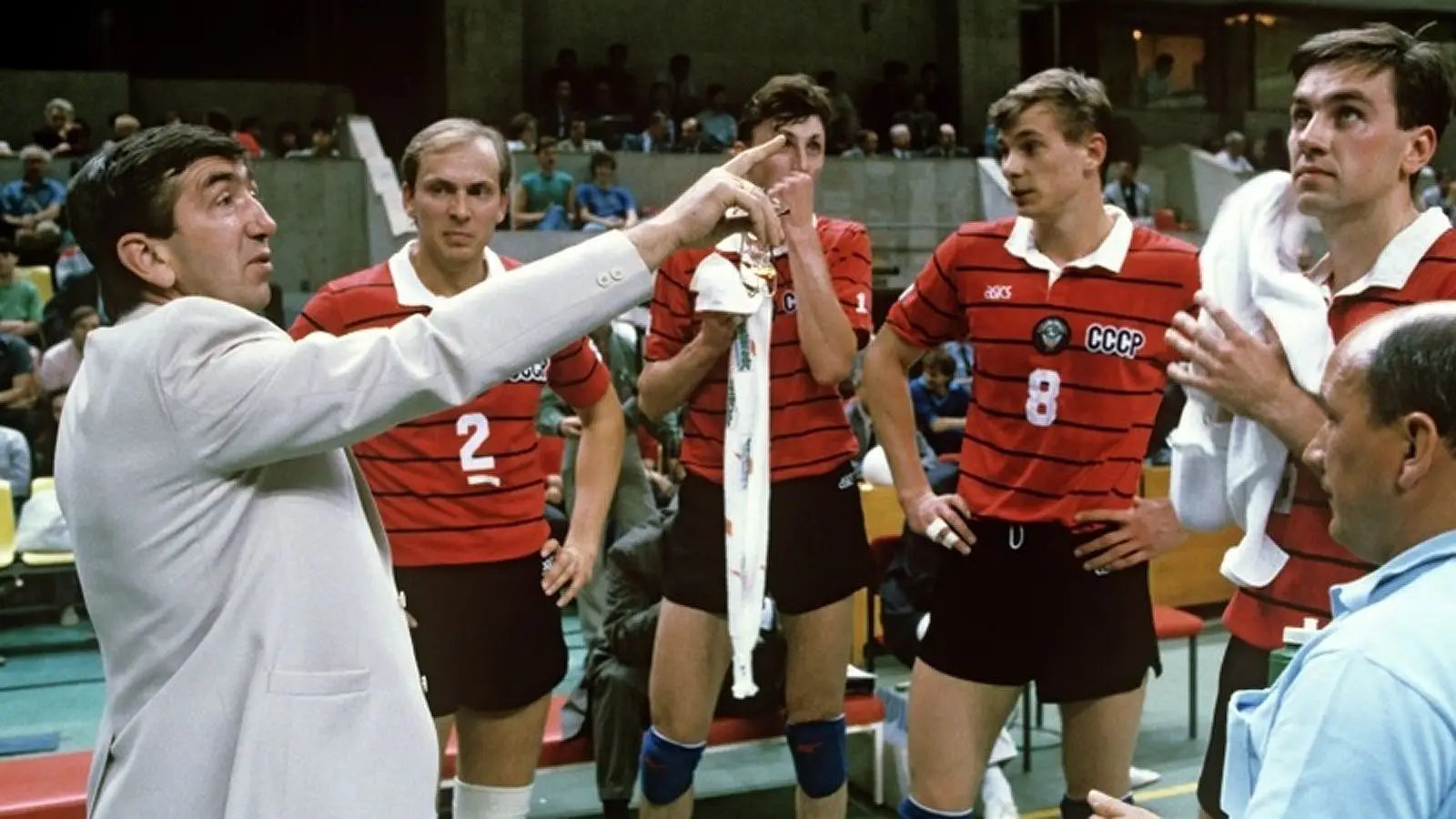Choosing the right serve is choosing your superpower. Some leave opponents confused, others make them fight for every ball. In volleyball, the variety of serves helps you create unique strategies and adapt to any opponent. Serves define not only your individual game, but also your team’s overall strategy, creating a dynamic that leads to victory.
Volleyball serves: How to choose your strategy
Volleyball is known for its unique and varied serving techniques, each of which is suitable for different skill levels and game situations. Let’s look at the most popular ones and determine how to choose a strategy.

Lower serve technique: advantages for beginners
This variation is considered the easiest to perform and is therefore often recommended for beginners. The down serve in volleyball is performed with minimal difficulty and requires only basic coordination skills. The player places the ball in the hand, tilts the body slightly forward, and takes a light swing with the free arm from bottom to top.
The muscles in the legs and body help create momentum, providing accuracy and control. Interestingly, many athletes start their volleyball careers with the low serve because it teaches proper hand and body positioning. Despite its simplicity, it can be extremely effective at the amateur level, especially if your opponents are not yet accustomed to reacting quickly to such shots.
Top serve technique: when power is on your side
The mechanics are more complex and require precise co-ordination and power. Here, the player throws the ball high up, then swings and strikes with an open palm, adding power by engaging the shoulder girdle and body muscles. It is important to consider the angle and speed of the swing to create a strong and accurate shot.
At the professional volleyball level, the serve can reach speeds of up to 120 kilometres per hour, making it extremely difficult to receive. The important point is proper footwork: pushing with both feet helps to create a powerful kinetic chain, ensuring a dynamic and efficient result. Brazilian volleyball player Sergio Santos is an example of a master of this type of serve, who has always stood out for his powerful and unpredictable serves.
The jump serve: seize the moment and surprise your opponent
One of the most spectacular and difficult elements. The technique requires not only precise body control but also good physical fitness. During a jump serve, the player takes a few steps to accelerate, then throws the ball high up, jumps and strikes at the peak of the jump. The height of the jump can reach 80-100 cm, which allows you to create powerful kicks that are hard to block.
To perform successfully, it is necessary to train the leg muscles, especially the quadriceps and calf muscles, which are responsible for the strength of the kick. Proper timing is also important – the ball must be hit at the top of the jump. This serve has become a signature element of many volleyball professionals, such as Maxim Mikhailov, who is famous for his ability to serve accurately and sharply, leaving his opponents without a chance.
How to serve correctly in volleyball: step by step
 Proper execution is a combination of technique, physical strength and mental concentration. Start with the correct foot position: one foot in front, the other slightly behind, weight evenly distributed. Throw the ball at a comfortable height – it should not be too high or too low to hit accurately.
Proper execution is a combination of technique, physical strength and mental concentration. Start with the correct foot position: one foot in front, the other slightly behind, weight evenly distributed. Throw the ball at a comfortable height – it should not be too high or too low to hit accurately.
Use the full amplitude of your arm during the swing, creating maximum speed and accuracy. It is important to engage your body and legs, creating momentum that helps you direct the ball accurately to the target. Work on your concentration and try not to make sudden movements that can upset your balance.
Serving Mistakes: Learning from Failure
Mistakes are an integral part of any training session, and serving in volleyball is no exception. Among the most common are incorrect tossing of the ball – too low or too high, which makes it difficult to hit. Another is incorrect hand position: the palm of the hand may not be fully open, resulting in poor contact with the ball. It is also worth avoiding excessive force: a shot that is not controlled most often ends with the ball flying out of the court. To reduce the number of errors, it is important to work on your technique, developing your feel for the ball and proper timing.
Serve training: how to develop your unique style
Start with basic coordination exercises: tossing the ball, working on shot accuracy, developing arm and body strength. It is useful to practise serving in different conditions – with a partner, with targets on the court, under time constraints. One interesting technique is visualisation: imagine the ball flying along a perfect trajectory and the opponent being unable to receive it. These exercises can help you improve your confidence and develop a unique serving style that will become your calling card on the court.
Volleyball records and outstanding serves: legends on the court
These stars are worth learning from. Thanks to their abilities, they have made volleyball history.
Sergey Tetyukhin and his phenomenal accuracy
Sergey Tetyukhin, a Russian volleyball player, has repeatedly amazed spectators with his incredible serve accuracy. During the 2012 Olympic Games in London, his strokes proved decisive in several important matches, which helped the team win gold. His speciality is his ability to accurately direct the ball into the opponents’ weak areas, which made his serve almost unacceptable.
Ginos Keisuke and the fastest serve in volleyball
Japanese volleyball player Ginos Keisuke set a record of 134 kilometres per hour. This incredible result was recorded at an international tournament in 2019. His serve combines speed and a complex trajectory that makes it almost impossible to receive. Ginos trained several hours a day, focusing on shoulder strength and accuracy.
Maxim Mikhailov: master of the jump serve
Maxim Mikhailov, Russian volleyball player. His serve reached speeds of 125 km/h and, due to the height of his jump (about 95 cm), the trajectory of the ball was so complex that it was almost impossible to receive it. This technique became a key element of his game and allowed the team to get important points at critical moments.

Wilfredo Leon and his power
Cuban volleyball player Wilfredo Leon stands out not only for his attacking skills in volleyball, but also for his powerful serve, which often brings direct points to the team. His hits are characterised by a combination of speed and power, making them extremely difficult to receive. In one of his matches at the World Championships, he managed to make 10 consecutive aces, which was an all-time tournament record.
Conclusion
 Volleyball serves can range from simple and precise to powerful and spectacular, and each of them has its own characteristics. The key is to choose the one that best emphasises your strengths and practice it to perfection. Start training today so that tomorrow you can surprise everyone with your new superpower on the court.
Volleyball serves can range from simple and precise to powerful and spectacular, and each of them has its own characteristics. The key is to choose the one that best emphasises your strengths and practice it to perfection. Start training today so that tomorrow you can surprise everyone with your new superpower on the court.
 en
en  ru
ru  de
de  ar
ar  es
es  hi
hi  fr
fr  nl
nl  it
it  pt
pt  el
el 



